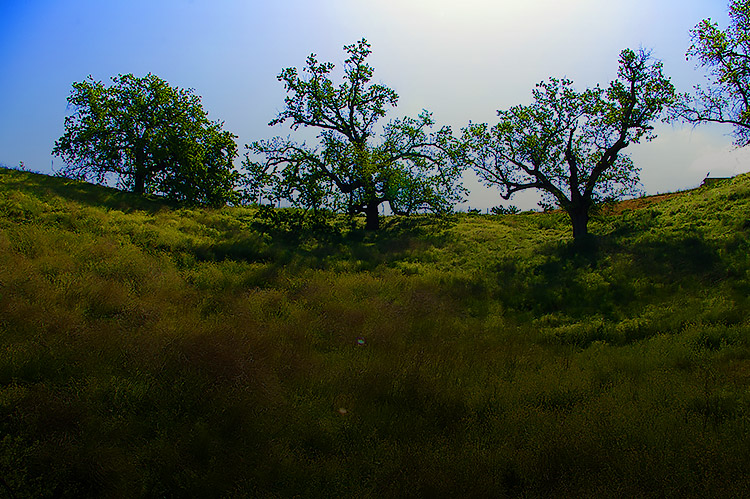Rattlesnake Safety
Warm weather calls to outdoors enthusiasts and snakes alike, making encounters of the slithering kind inevitable. California has a variety of snakes, most of which are benign. The exception is California's only native venomous snake: the rattlesnake.
Rattlesnakes can cause serious injury to humans and, on rare occasions, even death. Generally not aggressive, rattlesnakes strike when threatened or deliberately provoked, but given room they will retreat. Most snake bites occur when a rattlesnake is handled or accidentally touched by someone walking or climbing.
Approximately 8,000 people annually are treated for poisonous snake bites in the United States. However, the California Poison Control Center notes that rattlesnakes account for only about 800 of those bites each year, with about one to two deaths. California rattlesnake species include the northern Pacific rattlesnake in northern California, and in Southern California the Western Diamondback, Sidewinder, Speckled rattlesnake, Red Diamond rattlesnake, Southern Pacific, Great Basin rattlesnake and the Mojave rattlesnake.
The potential of running into a rattlesnake should not deter anyone from venturing outdoors, but there are several precautions that can be taken to lessen the chance of being bitten when out in snake country, which is just about anywhere in California. Rattlesnakes live from sea level to the inland prairies and desert areas to the mountains at elevations of more than 10,000 feet.
Dos and Don'ts in Snake Country
When hiking, stick to well-used trails and wear over-the-ankle boots and loose-fitting long pants. Do not step or put your hands where you cannot see, and avoid wandering around in the dark. Step ON logs and rocks, never over them, and be especially careful when climbing rocks or gathering firewood. Always avoid walking through dense brush or willow thickets.
Be careful when stepping over the doorstep as well. Snakes like to crawl along the edge of buildings where they are protected on one side.
Is it a Rattlesnake or Not?
Many a useful and non-threatening snake has suffered a quick death from a frantic human who has mistakenly identified a gopher snake, racer or other as a rattlesnake. This usually happens when a snake assumes an instinctual defensive position used to bluff adversaries. A gopher snake has the added unfortunate trait of imitating a rattlesnake by flattening its head and body, vibrating its tail, hissing and actually striking if approached too closely.
Keeping Snakes Out of the Yard
The best protection against rattlesnakes in the yard is a "rattlesnake proof" fence. It can be expensive and require maintenance, however. The fence should either be solid or with mesh no larger than 1/4 inch. It should be at least three feet high with the bottom buried a few inches in the ground. Slanting your snake fence outward about a 30-degree angle will help. Vegetation should be kept away from the fence since the snake could crawl to the top of an adjacent tree or shrub. Discourage snakes by removing piles of boards or rocks around the home. Use caution when removing those piles – there may already be a snake there. Encouraging and protecting natural competitors like gopher snakes, king snakes and racers will reduce the rattlesnake population in the immediate area. And, king snakes actually kill and eat rattlesnakes.
What Can be Done to Prevent a Bite?
- Hands, feet, and ankles are the most common sites for rattlesnake bites. Using some common sense rules can prevent most snake bites.
- Never go barefooted or wear sandals when walking in the rough. Always wear hiking boots.
- Always stay on paths. Avoid tall grass, weeds and heavy underbrush where there may be snakes.
- Use a walking stick when hiking. If you come across a snake, it can strike the stick instead of you.
- Always look for concealed snakes before picking up rocks, sticks or firewood.
- Always check carefully around stumps or logs before sitting.
- When climbing, always look before putting your hands in a new location. Snakes can climb walls, trees and rocks and are frequently found at high altitudes.
- Never grab "sticks" or "branches" while swimming. Rattlesnakes are excellent swimmers.
- Baby rattlesnakes are poisonous! They can and do bite. Leave them alone.
- Never hike alone. Always have a buddy to help in case of an emergency. Learn basic life-saving methods.
- Don't handle fresh killed snakes. You may still be bitten.
- Never tease a snake to see how far it can strike. You can be several feet from the snake and still be within striking distance.
- Don't keep rattlesnakes as pets. The majority of rattlesnake bites occur when people (usually intoxicated young men in their 20s) tease or play with their "pet" rattlesnake.
- Teach children to respect snakes and to leave snakes alone. Curious children who pick up snakes are frequently bitten.
- Always give snakes the right of way!
Remember, the only good snake is one that is alive and well. Snakes, even rattlesnakes, provide humans with a tremendous service they eat rodents, other reptiles, and insects, and are in turn eaten by other predators.
Source: California Department of Fish & Game

